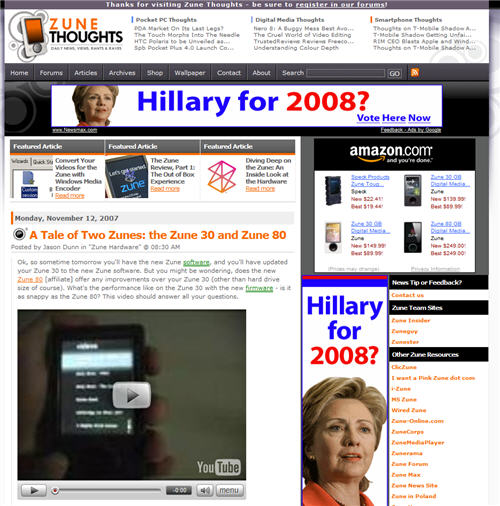I live in Calgary, and get my cable TV from Shaw, the local monopoly provider. In general, I’ve been quite pleased with Shaw over the years. I use them for Internet access (a 10 Mbps cable modem), analog cable (for my Media Center) and HDTV (with a Motorola PVR tuner), and both of my phone lines. Every month my bill from Shaw is just shy of $200. Compared to the other 800 pound gorilla in this market, Telus, Shaw is an absolute delight to deal with. Telus is a relic, a ex-government organization that hides behind a Byzantine phone menu system that has disconnected me at random half the times I’ve used it. I’ll do almost anything to avoid dealing with Telus (although I’m considering using their DSL service for a project, more on that later).
Shaw has been shuffling their TV channels around a fair bit lately – I believe twice in the past year – making room for new offerings. Their latest switch was moving all of our HD channels from the 300 block down into the 200 block, and they added around 10 new HD channels – ones that are part of some “enhanced” HD package that we don’t get as part of our regular HD package. Ashley sat down a few weeks ago to program the Motorola PVR to record the TV series we like to watch: all the CSI shows, The Unit, Heroes, etc. The fastest way to find TV shows is to use the guide search function, find the TV show you’re looking for, and tag it to record the whole series. That’s exactly what Ashley did – so imagine her shock when two of the nine or so that she flagged didn’t record.
What recorded instead? Well…something did. When we tried to play back two of those shows, it would start the playback stream, the freeze. It turns out those TV shows were on the HD channels that we don’t receive as part of our package. It seems idiotic that the PVR would let the customer flag shows for recording if the customer didn’t receive those channels as part of their package. I can’t flag a Pay Per View event for recording without first paying for it, so the PVR clearly has some capability to differentiate between what it’s allowed to record and what it’s not.
I decided to call Shaw and give them some feedback about how it would be great if their system didn’t work like this, and instead would tell the customer they couldn’t record that instance of the TV show because their didn’t receive that channel. It would be cool if it found another instance of the TV show on a channel that the customer did receive. Or what about an up-sell right then and there if the customer couldn’t watch the show at all with their current package?
There are many ways to do the right thing for both the customer and for Shaw as a business…so imagine my surprise when the Shaw representative I was speaking with (Jay, ID # 5217) proceeded to argue with me, insisting that their system worked perfectly. He said that as a Shaw customer I should be aware of exactly which channels I have access to, which ones I don’t, and keep that in mind when looking at the guide data. I was incredulous. “But I have access to hundreds of channels – you honestly think it’s reasonable for me to mentally compare what I’m seeing in the guide data to what channels I have in my package?”. Jay thought that was perfectly reasonable. Either Jay has super-human memory, or he’s one of those people who can’t understand something negative until it happens to them – which is not a good trait for anyone in customer service to have.
All I was looking for was a “Wow, that must have been frustrating to miss the season premier of two of your TV shows – let me make a note of this and we’ll see what we can do” type reply. Ultimately Shaw sends this type of customer feedback to Motorola so the next generation box might be just a bit smarter than the current one. That’s all I was looking for, and instead I got someone who insisted that I simply wasn’t using their product in the right way. What happened to the customer always being right? Shaw, you can do better.



